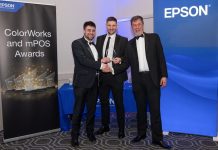The purely exploratory period for nanomaterial (NM) technologies is now over and they are becoming commonplace in industry due to their revolutionary potential.
For a company to widely and sustainably release NM innovations into the market it is crucial to ensure the correct registration processes are followed to achieve REACH compliance. However, there are currently no established guidelines under REACH due to testing difficulties at the nano-scale, where novel properties and behaviours occur compared to dissolved or bulk forms of the substance. Based on current NM registrations, and knowledge, ECHA has released some recommendations for registering NMs via the “Group Assessing Already Registered Nanomaterials” (GAARN).
Concerning substance identity registrants should be able to demonstrate they are/are not working with a NM basing their conclusion on the current commission definition for NMs (2011/696/EU). Following this an appropriate strategy based on substance identity should be derived.
The GAARN documents highlight specific NM physicochemical characteristics that should be assessed but at which product life-stage remained uncertain. Current international consensus is that due to the impact NM characteristics may have at each life-stage on the behaviour and fate of the NM, that the best practice will be characterization as-made/prepared, as-bought, as-dispersed and as-exposed. The same is also true for hazard assessment. The adoption of such a regime will allow the appropriate implementation of a testing strategy to assess human and environmental hazard and fate based on NM characteristics and changes throughout the whole life-cycle, and highlight characteristics that drive toxicity.
The derivation of NM physicochemical characteristics should be from a multi-method approach (i.e. dynamic light scattering and transmission electron microscopy for size distributions) as technological limitations mean no single method can appropriately assess the necessary parameters. It is pertinent to note that any capping-agent on the NM will be classed as an integral part of the NM and as such the NM+coating combination will be considered a single entity.
Opinion toward existing OECD guidelines for the testing of chemicals is that they remain acceptable for NMs. However, in some instances based on the NMs novel physicochemical characteristics, and behaviour in the test system, adaptation may be necessary. Within the test system dosimetry needs to account for not only mass balance but also particle number, and the concentration of the soluble fraction (if dissolution occurs i.e. transition metals). These should be assessed to elucidate the major drivers and best fitting relationships with toxicity, i.e. to produce an appropriate dose-response relationship. Such details are now part of R.7 ECHA document, but are subject to change as further knowledge is gained.
For risk characterisation a major issue, and concern, is the inability for current models (e.g. EUSES) to appropriately predict the eventual exposure level of NMs due to their novel behaviours. Validation of such models is also problematic when trying to separate nano-forms from the naturally occurring form when an abundance exists naturally in environmental samples. Or, when release levels lead to concentrations that are undetectable using current analytical methods. Probabilistic exposure models do exist, and more are in development. These probabilistic models currently represent the best option for determining exposure, unless monitoring data are available.
The regulatory landscape for NMs still holds many uncertainties and, is rapidly changing. Advancements in knowledge will inevitably feed into regulation and consensus opinion is slowly being reached. A whitepaper regarding regulation under REACH should be available by 2020, via EU funded projects e.g. NANoREG. However, for companies wanting to register nanoforms of a substance and remain compliant with the REACH 2018 deadline this is not soon enough. The registration should therefore follow the few guidelines presently available and testing strategies should be developed specific to each NM based on physicochemical characteristics. The test strategies adopted beyond that of the guidance that will ensure longevity of the dossier in light of new developments will be the responsibility of the registrant and, expert opinion should be sought.
Blue Frog Scientific Limited is a UK based independent regulatory consultancy that uses good science, innovative thinking and clarity to achieve regulatory compliance.
Dr. Kai B. Paul
(BSc AMSB)














